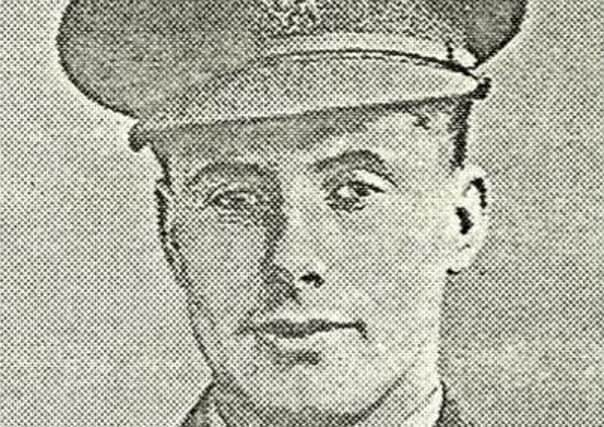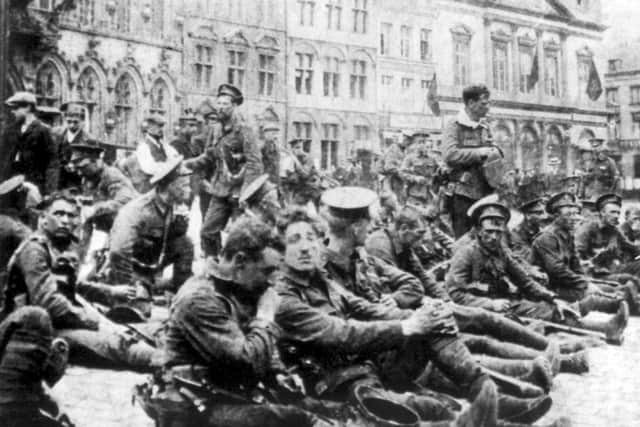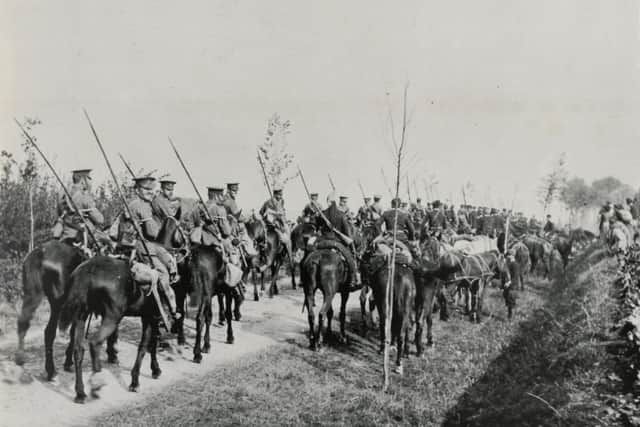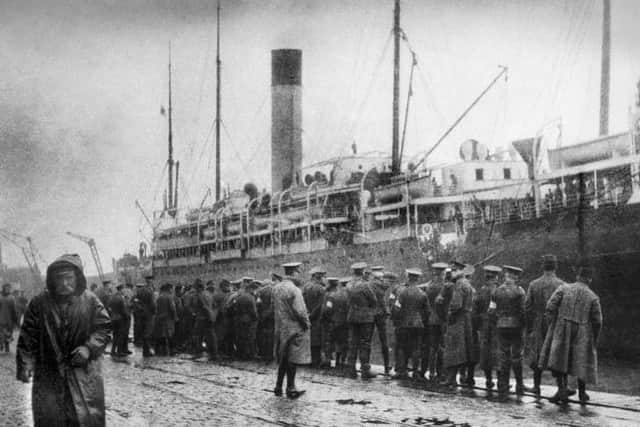Remembering a WW1 hero who worked for the News Letter


The organisation’s stated focus is “recalling those from Northern Ireland who served the cause of freedom and democracy’ and its website is subtitled ‘Every Day is a Remembrance Day’.
While it’s absolutely impossible to mention every unfolding anniversary or commemoration here - though Roamer often wants to - there was a birthday at the weekend that was particularly relevant to this newspaper!
Advertisement
Hide AdAdvertisement
Hide AdLast Friday marked anniversaries of 14 local men who died and three who served and came home, including Robert Sterling ‘from the Belfast News Letter and the North Irish Horse.’


Born on September 11, 1891 in Tandragee, County Armagh, the note in Roamer’s mailbox from the Remembrance website stated, “Robert Sterling left a unique record in his correspondence from 1913-21”.
His obituary in the News Letter on June 7, 1939 outlined a successful and wide-ranging career in journalism after WWI, beginning with “the Portadown Express and afterwards he went to Newry, where for some years he was editor of the Newry Telegraph.”
Sterling enlisted in the North Irish Horse in April 1913 and went to France in August 1914, seeing action in the retreat from Mons and the advance to the Aisne.
Advertisement
Hide AdAdvertisement
Hide AdHe was promoted to Lance Corporal and Corporal by the end of 1914, and wrote a number of letters to his family.


“I am in the best of health and still at the front,” he wrote from France in October 1914, adding “we have been under fire on several occasions but have come out lucky. We have only lost a few men.”
Several days later Robert recounted “we have been hard at it, but now we are having a comparatively easy and comfortable time, doing General’s mounted escort.”
One of his letters at the end of October 1914 vividly outlined the horrors of the front lines.
Advertisement
Hide AdAdvertisement
Hide Ad“We landed at Le Havre over two months ago, and after a couple of days rest entrained to St. Quentin, arriving just in time to join the great retirement of the British forces after the terrible battle at Mons. We came right back almost to Paris, and I can tell you we got it tight.


“We were on the move continually - sometimes night and day, and there were times we could hardly get out of the saddle. We were mostly engaged on flanking patrols and outposts, and we had several brushes with Uhlan (enemy light cavalry) scouting parties.
“On one occasion we had our Cossack posts put out near a small deserted village, whilst the remainder of the troop were in a yard in the village feeding our horses.
“Whilst there, the sentry informed us that he had seen a German looking round the corner at the bottom of the village street.
Advertisement
Hide AdAdvertisement
Hide Ad“It was not long until we had the saddles tightened up, and out we dashed in the direction the German had been seen. When we got round the corner we saw seven or eight Germans galloping away as fast as they could. We gave hot chase, firing after them, but as it is impossible to take aim sitting on a galloping horse, we only succeeded in killing one of them.
“The others had too much of a start, and scattered in different directions. There were six of us, and had they turned on us with their lances they might have done damage. However, it is characteristic of the Uhlans to run when fired upon; they are the greatest cowards I have ever come across.
“The hottest time we have had yet was during the Germans’ retirement from the Marne; they almost pinned us and a crowd of the Lancers at a small village, and we had to gallop out of it as hard as we could along a road bordered with trees.
“The bullets were cutting the leaves of the trees all around us, and several of our horses were hit. A chap who was in front of me had his horse shot dead under him, but he succeeded in catching a horse belonging to a Lancer who was killed, and on it he got clear.
Advertisement
Hide AdAdvertisement
Hide Ad“When we got off the road into the open fields they got the big guns to play upon us, and the shells tore up the earth all around. However, we got safely to cover; but it was a terrible experience and one I never wish to have again. It was a miracle we did not lose a lot of men.”
Robert Sterling served in France and Belgium until December 1917.
In April 1918 he was posted to the 7th Queen’s Own Hussars, and served with this unit in Mesopotamia until 1919, excepting a short spell with the 21st Lancers on the North-West frontier of India.
After India he was promoted to Captain and Commandant of Prisoner of War Camps at Hinaidi, Baghdad, Diwaniyiah and Hillah.
Advertisement
Hide AdAdvertisement
Hide AdFollowing jobs with other papers after demobilising he joined the News Letter in 1921 and died after a severe illness on June 6, 1939, survived by his wife and 14-year-old son.
Full details on Remembrance NI are at: http://www.northirishhorse.com.au/NIH/Images/People/Full%20pictures/Sterling.html